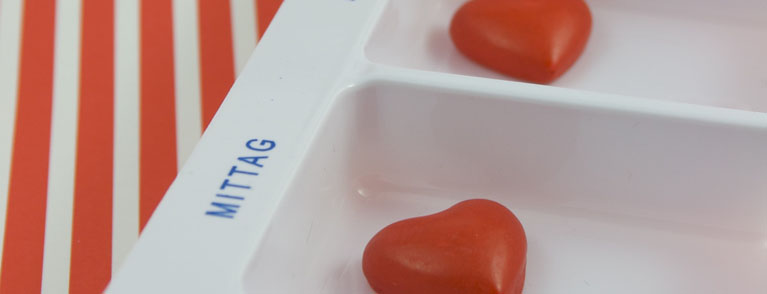Recently, I was discussing (as an older “doc”) with one of my marcoumar anticoagulated 87-year-old patients with atrial fibrillation, status post anterior myocardial infarction with akinesia, status post severe gastric ulcer hemorrhage years ago, BII surgery, etc., about VKA and the (no longer brand new) direct oral anticoagulants (DOAK).
Together we took the trouble to review all “pros” and “cons” together (the patient pre-informed himself in detail on the internet), and especially to critically analyze the TTRs (times in the range of INR 2-3) of the last common 17 years (!). He was extremely exemplary at 90% and together we decided to stay with VKA for now.
In the meantime, the DOAK have developed a very solid and interesting data base and it is worth knowing this so that especially we older and VKA-experienced physicians can carry out an optimal “decision making”, true to the motto: “No decision about my patient without my patient”. Well-controlled patients like ours described above can probably be safely left on VKA. However, new hires should be included in the DOAK vs. VKA decision process.
With apixaban, dabigatran, rivaroxaban and soon edoxaban, four interesting substances are available to us after an extensive study program and after five years and more of field experience. Let’s not forget that anticoagulation is one of the most beneficial and, at the same time, most dangerous interventions of everyday medical life. Therefore, it is worthwhile to know in detail the current advantages (less intracerebral hemorrhage with at least the same or better efficacy as the most prominent feature, besides no “INR measurement”, e.g., in atrial fibrillation), properties, indications, and contraindications. This series of articles is intended to help with that. Nicole R. Bonetti provides a helpful and concise overview of the state of DOAKs in internal medicine, as an update, but also as a reference book, e.g., regarding effectiveness and bleeding rates, interactions, advantages and disadvantages of the individual substances, which are currently in a neck-and-neck race. Combination with antiplatelet agents is not yet established and viable guidelines can be found here as well. PD Dr. med. Jan Steffel leads you seamlessly on into daily practice with his hit parade of 10 FAQs, such as what to do if a dose is forgotten (question 2), but also into the pleasantly simplified bridging procedure (question 10). It also clarifies how to react in the event of bleeding (question 7). Anna L. Meyer, MD, shows us the complexity of anticoagulation in artificial hearts/pumps, as well as the associated bleeding risks, this in areas where there is often no clear study situation (not even for DOAK), but valuable “recipes” of experienced colleagues are gladly taken up and discussed. More recent resp. unexpected bleeding phenomena such as acquired von Willebrand disease, caused by high shear rates in the pumps, are explained in a didactically understandable way. We already knew such phenomena from severe aortic valve stenosis. The use of DOAK in such areas is eagerly awaited and must be planned prudently, since difficulties arise or are to be expected, especially with artificial surfaces with substances that have no effect on contact activation (valve prostheses).
Dear colleagues, much is known by now, but some things still remain to be done and clarified for the DOAK, such as the indications in the tumor patient, the pediatric case, the antidote (the latter seems to be well and rapidly “on its way” by now), etc. We hope you enjoy browsing through the new tricks and wish you good decision making with your patients and the (D)OAK!
Prof. Dr. med. Jürg H. Beer
CARDIOVASC 2014; 13(2): 4











